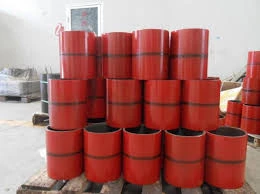- Afrikaans
- Albanian
- Amharic
- Arabic
- Armenian
- Azerbaijani
- Basque
- Belarusian
- Bengali
- Bosnian
- Bulgarian
- Catalan
- Cebuano
- Corsican
- Croatian
- Czech
- Danish
- Dutch
- English
- Esperanto
- Estonian
- Finnish
- French
- Frisian
- Galician
- Georgian
- German
- Greek
- Gujarati
- Haitian Creole
- hausa
- hawaiian
- Hebrew
- Hindi
- Miao
- Hungarian
- Icelandic
- igbo
- Indonesian
- irish
- Italian
- Japanese
- Javanese
- Kannada
- kazakh
- Khmer
- Rwandese
- Korean
- Kurdish
- Kyrgyz
- Lao
- Latin
- Latvian
- Lithuanian
- Luxembourgish
- Macedonian
- Malgashi
- Malay
- Malayalam
- Maltese
- Maori
- Marathi
- Mongolian
- Myanmar
- Nepali
- Norwegian
- Norwegian
- Occitan
- Pashto
- Persian
- Polish
- Portuguese
- Punjabi
- Romanian
- Russian
- Samoan
- Scottish Gaelic
- Serbian
- Sesotho
- Shona
- Sindhi
- Sinhala
- Slovak
- Slovenian
- Somali
- Spanish
- Sundanese
- Swahili
- Swedish
- Tagalog
- Tajik
- Tamil
- Tatar
- Telugu
- Thai
- Turkish
- Turkmen
- Ukrainian
- Urdu
- Uighur
- Uzbek
- Vietnamese
- Welsh
- Bantu
- Yiddish
- Yoruba
- Zulu
Exploring the Different Types of Casing and Tubing Connections in Oil and Gas Industry
Casing and Tubing Connections An Overview
In the field of oil and gas drilling, casing and tubing connections play a crucial role in ensuring the integrity and functionality of the well structure. These connections are essential components that serve to protect the wellbore, facilitate the extraction of hydrocarbons, and prevent the influx of contaminants. Understanding the types of connections, their design, and their importance is vital for professionals in the industry.
Casing is a series of steel pipes that are installed in the wellbore after drilling to support the walls of the well and isolate different geological formations. It prevents the collapse of the well and protects freshwater aquifers from contamination. Casing is typically installed in stages, with each successive layer being narrower than the last, which is referred to as string casing. The installation process usually involves cementing the casing in place, creating a seal that secures the casing to the wellbore.
Tubing, on the other hand, is the pipe through which the hydrocarbons are produced from the reservoir to the surface. It is placed inside the casing and is smaller in diameter. The tubing connections must be capable of withstanding the pressure of the fluids being transported and any other dynamic stresses encountered during production. This system must also allow for the efficient flow of oil and gas, maintaining a balance between pressure and flow rate.
casing and tubing connections

The connections used in casing and tubing systems can vary significantly. Common types include threaded, welded, and proprietary connections designed for specific applications. Threaded connections are prevalent due to their ease of assembly and disassembly; however, they can be prone to leaks if not properly maintained. Welded connections offer greater strength and can withstand higher pressures but are more challenging to repair if a problem arises. Proprietary connections are often developed by manufacturers to address specific requirements, optimizing performance in unique conditions.
One of the critical factors influencing the choice of connection type is the environmental conditions of the well—such as pressure, temperature, and the presence of corrosive substances
. The materials used in manufacturing these connections must withstand these harsh conditions to ensure the longevity and reliability of the well structure.Regular inspection and maintenance of casing and tubing connections are essential to prevent failures that could result in catastrophic consequences, such as blowouts or leaks. Advanced technologies, such as non-destructive testing (NDT) methods, are increasingly being employed to monitor the integrity of connections, ensuring they are secure and functional throughout the lifespan of the well.
In conclusion, casing and tubing connections are vital components within the oil and gas industry, playing a significant role in wellbore stability and fluid transport. A thorough understanding of their types, designs, and maintenance practices is essential for ensuring safe and efficient operations in the extraction of natural resources. As the industry continues to evolve, ongoing innovations in connection technology will further enhance operational reliability and safety.
-
Tubing Pup Joints: Essential Components for Oil and Gas OperationsNewsJul.10,2025
-
Pup Joints: Essential Components for Reliable Drilling OperationsNewsJul.10,2025
-
Pipe Couplings: Connecting Your World EfficientlyNewsJul.10,2025
-
Mastering Oilfield Operations with Quality Tubing and CasingNewsJul.10,2025
-
High-Quality Casing Couplings for Every NeedNewsJul.10,2025
-
Boost Your Drilling Efficiency with Premium Crossover Tools & Seating NipplesNewsJul.10,2025







